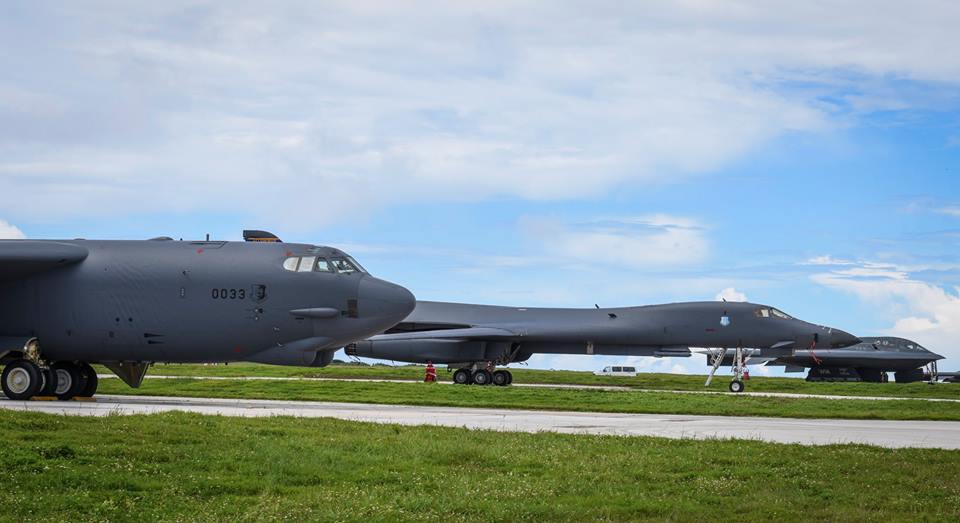Ballistic missiles could inflict considerable damage to American aircraft carrier groups as well as to every US base in the Indo-Pacific Command region.
The Pentagon has concluded after a series of war games that China will defeat American forces in a sea war by 2030, by which time a modernized Chinese navy would operate an array of new attack submarines, aircraft carriers, and destroyers.
Anonymous US defense sources told The Times that China’s ballistic missiles could inflict considerable damage to American aircraft carrier groups as well as to every US base in the Indo-Pacific Command region. The Pacific island of Guam, a base for American strategic bombers such as the B-1, B-2, and B-52, is now considered to be wholly at risk.
Various scenarios also show that in an invasion of Taiwan, Americans will struggle to stop Chinese forces from taking over the island.
“Every simulation that has been conducted looking at the threat from China by 2030, and there have been various ones carried out, for example in the event of China invading Taiwan, have all ended up with the defeat of the US,” said Bonnie Glaser, director of the China power project at the Centre for Strategic and International Studies in Washington and a consultant for the US government on East Asia. “Taiwan is the most volatile issue because that could escalate to a war with the US, even to a nuclear war.
“In the Pentagon and state department and the White House, China is now seen without doubt as the biggest threat. We have been too passive in the past … Guam is now in range of their ballistic missiles, so the US would take a beating if there was a conflict.”

Beijing has stepped up its military activities in the South and East China Seas, harassing ships, militarising islands whose sovereignty is claimed by others, and sabre-rattling over the planned reincorporation of Taiwan. President Xi has said he wants the island back under “One China” by 2050 and is prepared to use force.
The US has no defense pact with Taiwan but has increased arms sales to help it to build a deterrent. US concerns are expected to be highlighted in the Pentagon’s 2020 China military power report, which is due to be sent to Congress in the summer.
A source was quoted as saying that the Pentagon is channeling resources toward hypersonic weapons to counter Chinese ballistic missiles.
As already reported, Rear Admiral Lou Yuan, deputy head of the Chinese Academy of Military Sciences, told during the Military Industry List summit in Shenzhen on Dec. 20, 2018, that the ongoing disputes over the ownership of the East and South China Seas could be resolved by sinking two US Navy aircraft carriers.
He declared in fact that China’s highly capable anti-ship ballistic and cruise missiles are more than capable of hitting U.S. Navy carriers, despite them being at the center of a ‘bubble’ of defensive escorts.
The U.S. Navy 10 Nimitz-class aircraft carriers, USS Nimitz (CVN 68), USS Dwight D. Eisenhower (CVN 69), USS Carl Vinson (CVN 70), USS Theodore Roosevelt (CVN 71), USS Abraham Lincoln (CVN 72), USS George Washington (CVN 73), USS John C. Stennis (CVN 74), USS Harry S. Truman (CVN 75), USS Ronald Reagan (CVN 76) and USS George H.W. Bush (CVN 77), are the largest warships in the world, each designed for an approximately 50-year service life with just a single mid-life refueling. The next generation of aircraft carriers, the Gerald R. Ford-class (CVN 78) was ordered in September 2008 as the force structure replacement for USS Enterprise (CVN 65), which was inactivated in 2012.
The typical air wing aboard a U.S. Navy aircraft carrier consists of:
• Four Strike Fighter (VFA) Squadrons, with twelve F/A-18E/F Super Hornets each.
• One Electronic Attack (VAQ) Squadron, made up of five EA-18G Growlers.
• One Carrier Airborne Early Warning (VAW) Squadron, with four E-2C Hawkeyes or five E-2D “Advanced” Hawkeyes.
• One Helicopter Sea Combat (HSC) Squadron of eight MH-60S Seahawks.
• One Helicopter Maritime Strike (HSM) Squadron of eleven MH-60R Seahawks, 3–5 of which are typically based in detachments on other ships of the carrier strike group.
• A Fleet Logistics Support (VRC) Squadron Detachment of two C-2A Greyhounds.
Photo by U.S. Navy and U.S. Air Force

